Looking for:
User manual Ableton Live 9 Suite – Music Production Software (Boxed) |

The results will include les that match all search terms, as opposed to any. Rescanning happens in the background, and you can keep making music while Live does its work, but you can also abort the search with this button if the disk traf c is bothering you.
Hint: You can preview les even when the Preview switch is not activated by pressing Return Click on a sample le or use to select it. Click in the Tab’s scrub area to make playback jump to that point. Cancel renaming with the key.
Instead of using the keys, we can also click on the le’s Hot- Swap icon to load it. The analysis le contains data gathered by Live to help optimize the stretching quality, speed up the waveform display and automatically detect the tempo of long Live puts this analysis le in the same folder as the sample.
Samples that have an. Samples without an. The Rendered Track Chooser. If you are monitoring the Master output, you can be sure that the rendered le will contain exactly what you hear. This should allow any sound from external devices to fade out, but if you need more time for example, if you’re waiting for a long reverb tail , you can increase the wait time by typing a new number in the number box.
Because they only contain references to samples on disk rather than the audio data itself , Live Clips are very small, which makes it easy to develop and maintain your own collection. Uploaded Sets can then be shared with other Live users. Of the three tracks contained in the Set shown in the following gure, two contain Session View clips. The template Live Set, Template. The easiest way to locate this folder is to search your disk for Template.
Clicking the Edit button will open the referenced sample in the external application. The sample will remain of ine as long as the Edit switch is engaged. Usually, Live takes care of this automatically. When you save a Live Set under a new name or in a new folder location, Live will create a new project folder and store the Live Set there unless you are saving the Live Set into an And now for something completely different: We choose the File menu’s New command and record a samba tune.
So, we Save As At times however, it may make more sense to save a preset with the current Project. Page 63 Library by default but you can also save them with a Project. Ableton delivers Library content that can serve as a starting point for creative exploration. Content is shipped in the form of Factory Live Packs. You should not use or modify this folder or its contents. In the Preferences’ Library tab, you will nd the Library Location chooser, which contains a list of Library locations that you’ve used in the past: The Library Location Chooser.
Live will then offer to install any default packages to the new location. Note that Live will not care if the sample you offer is really the sample that was missing. To select the folder, click the associated Set Folder button. Page Live will then request that you choose a location for the new Project.
As long as you’re working in a Project meaning that you’ve saved your current Live Set , every device in the Device Browser will show a Current Project sub-folder. You can organize your les any way you want within a Project, but you’ll need to use the File Manager to relink the les that you’ve moved around: 1 In Live’s Browser or via your operating system, reorganize the les and folders within your Project folder.
Page 75 Chapter 6 Arrangement View The Arrangement View displays the Arrangement, which contains music laid out along a song timeline, like a multitrack tape. A Piece of Music in the Arrangement View. The Arrangement View is a powerful editing tool that easily lets you combine and arrange MIDI, loops, sound effects, video and complete pieces of music. To smoothly change the zoom level, click and drag vertically in the beat-time ruler at the top of the Arrangement View you can also drag horizontally to scroll the display.
Note that you can also drag horizontally to scroll the display. Using this method, you can zoom and scroll to focus around any part of the Arrangement with just one mouse motion. While the mouse is held down over the scrub area, a portion of the Arrangement the size of the chosen quantization setting will be repeatedly played. With small quantization settings, or a setting of None, this allows you to scrub through the music.
Locators can be set at any point in the Arrangement. This can be done in real time during playback or recording with the Set Locator button, and will be quantized according to the global quantization value set in the Control Bar.
The numbers must be separated by a delimiter such as a slash, comma, period, or any number of spaces. These marker values can also be set by adjusting the time signature elds in the Control Bar, either by typing in values or dragging the numerator and denominator sliders. If you import a MIDI le into the Arrangement, you’ll be given an option to import any time signature information that was saved with the le.
If you choose to do this, Live will automatically create time signature markers in the correct places. Additionally, adjacent clips on the same audio track can be crossfaded. To access the fades for an audio track’s clips: 1. Crossfaded Clips. In this case, pressing returns the fade handle to a default length of 4 ms. With this option Delete enabled, new clips in the Arrangement View will have these short declicking fades by default.
This editing method lends itself to an ef cient division of labor between the two hands: One hand operates the mouse or trackpad, while the other hand issues the keyboard shortcuts for the menu commands.
You can also hold and use the arrow keys to manipulate the selection. To split a clip in two halves, do the following: 1. Suppose you have, by editing or improvising, come up with a layout of clips that sound good in Arrangement Loop mode. Selecting that part of the Arrangement, for instance by using the Edit menu’s Select Loop command, and then executing the Consolidate command creates a new clip that can be treated as a loop.
Page 91 Chapter 7 Session View In Live’s Arrangement View, as in all traditional sequencing programs, everything happens along a xed song timeline. Each clip in the Session View has a triangular button at the left edge. Click the button with the mouse to launch clip playback at any time, or pre-select a clip by clicking on its name, and launch it using the computer’s key.
Slots in Group Tracks show a shaded area to indicate that at least one of the contained tracks contains a clip at that location. The color of the shading is the color of the left-most clip in the group. The horizontal rows are called scenes. The Scene Launch buttons are located in the rightmost column, which represents the Master track.
To launch every clip in a row simultaneously, click on the associated Scene Launch button. This can be very useful in organizing the live performance of a song with multiple parts. Monitoring the Input A microphone icon appears in an audio track that is set to monitor its input. A keyboard icon appears in a MIDI track under these same circumstances.. Playing the Arrangement. If the track is playing clips from the Arrangement, a miniature display representing the Arrangement clips being played appears.
However, some power-users don’t want the current focus e. The Control Bar’s Record Button. The Stop All Clips Button. The Clip View. Clip envelopes and their associated Clip View components are covered in detail in a separate manual chapter. This setting is relevant only for display; it does not affect playback. Please note that Clip Signature is completely separate from the project’s time signature, and can be set independently for each clip.
When the Warp switch is off, Live plays the sample at its original, normal tempo, irrespec- tive of the current Live Set tempo.
This is useful for samples that have no inherent rhythmic structure: percussion hits, atmospheres, sound effects, spoken word and the like. Zooming and scrolling in the Sample Display work much like they do in the Arrangement View. When Warp is disabled, zooming and scrolling can be done anywhere in the Sample Display.
The Follow Switch. Playing and Scrubbing Clips The section of the sample that plays when a clip is launched is set with the clip’s region and loop controls. For warped clips, these elds display values as bars-beats- sixteenths; for unwarped clips, the display is in minutes-seconds-milliseconds.
Notice that you can use the Set buttons here to place the markers during playback. You can click and drag to change the position and length of the loop brace in the Sample Display, or you can type exact values into the Loop Length and Position elds to the left of the display.
The Transpose control shifts the clip pitch in semitones. The Clip Gain slider, calibrated in dB, changes the clip gain. The Save Default Clip button saves the current clip’s settings with the sample. With multiple clips selected, this button will save them all simultaneously. Once saved, Live will restore the current clip settings whenever you drop the sample into a Live Set.
Simply disable this option if you wish to use the new mode. If the RAM Mode switch is on, Live is loading the audio referenced by the clip into the computer’s memory rather than reading it from disk in real time. Until the Set is saved, new samples remain at the location speci ed by Temporary Folder. There are a few rules for the reversing process. First, any Warp Markers will remain xed to their positions in the sample. This means that a Warp Marker on the downbeat of the second bar of a clip will end up on the downbeat of the second-to-last bar after reversal.
The Warp Markers will be retained only if the new sample has the exact same length as the old sample. This opens the File Manager for the current Set with the sample referenced by the clip selected.
Page Setting The Tempo Chapter 9 Tempo Control and Warping Unlike music stored on tape or in a traditional digital audio workstation, the music in Live remains elastic at all times. Live is capable of time-warping samples while streaming them from disk so as to synchronize them to the current Live Set’s tempo. This happens without affecting the pitch, which can be changed independently.
You can have an external sequencer or drum machine play along with Live or have Live play along with the sequencer. As long as your Set’s tempo is basically the same as that of the unsynchronized material, you can use the Nudge buttons to temporarily speed up or slow down Live’s playback to match what you hear.
If the Auto-Warp Long Samples preference is on, Live assumes that long samples contain music that should be played in sync with the Live Set’s tempo. If you would rather have Live default to playing long samples as they are, disengage this preference.
They can then be dragged or moved with the arrow keys to different points in time. Warp Markers can also be deleted by double-clicking them, or by pressing the computer keyboard’s key after selecting them. As you mouse over transients, temporary pseudo Warp Markers appear. These have the same shape as regular Warp Markers, but they’re grey. Double-clicking or dragging a pseudo Warp Marker creates an actual Warp Marker or, if there are no Warp Markers later in the clip, changes the tempo for the clip segment.
Warping is, of course, an optional property of clips. Syncing Straight Loops When you import a sample that represents a well-cut musical loop of 1,2,4 or 8 bars in length, Live usually makes the correct assumptions to play the loop in sync with the chosen tempo. Syncing Odd-Length Loops If you import a sample that contains a seven-bar loop, Live initially assumes the loop is eight bars long or four, depending on its length and plays it out of sync. You may want to pin the adjacent events as well, to avoid affecting neighboring regions in the sample.
As long as Auto-Warp made the correct set of informed guesses, the clip will be ready to play in perfect sync with the Live Set’s tempo. However, if Auto-Warp does not quite do what you want, you can control its results. Directing Auto-Warp is also relatively simple when you have imported a perfectly cut loop. You can tell Auto-Warp to work accordingly using the Warp As Live will propose a loop length that makes the most sense given the current Live Set’s tempo.
These commands are also available from the start marker. But it is also possible to automatically snap the entire sample to the grid at once by using the Quantize command.
Granular resyn- thesis achieves time compression and expansion by repeating and skipping over parts of the sample the grains. The warp modes differ in the selection of grains, as well as in the details of overlapping and crossfading between grains. At , there is no fade. At 0, each segment decays very quickly. Long envelope times can help to smooth clicks at the end of segments, while short times can be used to apply rhythmic gating effects. This instrument can be a virtual instrument in a MIDI track’s device chain or an external synth fed via the track’s output routing.
You can use the Clip View Box selector to make sure the Notes box is showing, then click in the title bar of the Notes box to bring up the MIDI Editor on the right-hand side of the screen.
If the MIDI track is armed, activating Preview also allows you to step record new notes into the clip. Along the horizontal axis lies a time ruler, which shows note position along a musical timeline. The vertical axis contains the note ruler, displaying octaves C0 C10, and a representation of a piano keyboard the piano roll.
The black rectangular outline represents the part of the clip that is currently displayed in the Editor above. To scroll, click within the outline and drag left or right; to zoom in and out, drag up and down.
To select all of the notes that begin during the timespan, press Return After placing the insert mark, you can manipulate it using your computer keyboard. Using the options presented here, you can select either the current grid size or a speci c meter value for quantization and set either the note start or end or both to be quantized.
Quantizing the note end will stretch the note so that it ends at the chosen meter subdivision. Tip: To set a group of notes so that they all have the same velocity, select their markers in the Velocity Editor, drag them up or down to either maximum or minimum velocity, and then adjust velocity to the desired value.
Please note that note-off or release velocity is a somewhat esoteric parameter, and is only supported by certain devices. Ableton’s Sampler instrument, for example, provides note-off velocity as a controller for a variety of parameters. Note Stretch Ctrl markers will then appear in the Note Editor, allowing notes to be scaled proportionally in time. Page Chapter 11 Using Grooves The timing and feel of each clip in your Set can be modi ed through the use of grooves.
Live’s Library includes a large selection of grooves, which appear as. Groove Files in the Browser. The Hot-Swap Groove Button. Grooves can be applied to both audio and MIDI clips. In audio clips, grooves work by adjusting the clip’s warping behavior, and thus only works on clips with Warp enabled. You can also save and hot-swap grooves via the buttons next to the Groove’s name.
You can then convert the edited clip back into a groove, via the process below. In this example, we’d extract the snare chain, creating a new clip and track that contained only the snare notes. Then we could apply a different groove to this new clip. Page Chapter 12 Launching Clips The Live Session View is set apart by the fact that it gives you, the musician, a spontaneous environment that encourages performance and improvisation.
An important part of how you take advantage of the Session View lies within how you con gure your various Session View clips. Note that you can edit the launch settings of more than one clip at the same time by rst selecting the clips and then opening the Clip View. The Clip Quantization chooser lets you adjust an onset timing correction for clip triggering.
To disable clip quantization, choose None. For more on playing clips via MIDI, see the respective section. A group is de ned by clips arranged in successive slots of the same track.
Tracks can have an unlimited number of groups, separated by empty slots. The Follow Action Controls. Play Last Clip launches the last bottom clip in a group.
Play Any Clip plays any clip in the group. Play Other Clip is similar to Play Any Clip, but as long as the current clip is not alone in the group, no clip will play consecutively. Set up Follow Actions for the rst clip. You will want to make Follow Action Time equal to the clip’s length. But now, imagine a group consisting of one single clip. Return tracks receive their input from the respective sends. This setting effectively turns the track into what is called an Aux on some systems: the track is not used for recording but for bringing in a signal from elsewhere for instance, a ReWire slave program.
Note that the Audio Preferences also provide access to the Channel Con guration dialogs, which determine which inputs and outputs are used, and whether they are available to Live as mono or stereo pairs.
All available input and output ports are listed here. To prevent this, you can turn the computer MIDI keyboard off when it is not needed. MIDI messages that are used for remote-controlling Live’s user-interface ele- ments; 3. MIDI messages that are mapped to remote-control Live’s user-interface elements are eaten up by the remote control assignment and will not be passed on to the MIDI tracks. The Output Channel chooser presents you with a list of the instruments that you currently have in your Reason rack; select the instrument you want to address.
Select Reason from the audio track’s Input Type chooser. Resampling can be a fun and useful tool, as it lets you create samples from what is currently happening in a Live Set that can then be immediately integrated.
Both approaches result in Track A’s output being fed into Track B. Therefore, changes that are made to the tapped track’s devices or mixer have no effect on the tapped signal.
If a track contains one or more Drum Racks, internal routing points will be available for any Post-Effects Recording Let’s say that you are feeding a guitar into Live, building up a song track by track, overlaying take onto take.
A single MIDI note can prompt, for example, Native Instruments’ Absynth to produce something that sounds more like a piece of music than a single tone. Suppose we have the individual drums of a drum kit coming in on separate tracks for multitrack recording. In the mix, we can easily change the volumes of the individual drums, but adjusting the volume of the entire drum kit against the rest of the music is less convenient.
Note that the Output Channel chooser now offers a selection of destinations: We can either feed the new track’s output into the input of the pad track, or we can directly address the Simpler.
This can be easily remedied by cutting the clips from the pad track and pasting them into a third track that can be independently muted and that can hold its own MIDI effects. Soloing a track that taps one of Impulse’s sample slots will still allow you to hear the output of that slot. A multi-timbral instrument is like several instruments in one, with each component part or whatever term the manufacturer uses receiving MIDI on a separate MIDI channel. Page Some vocoder plug-ins include a built-in synthesizer to generate the carrier signal.
In this case, the only difference from the above procedure is that the vocoder instrument is dragged into a MIDI track. Feeding the side-chain audio input works as described above. Please note that Ableton’s Auto Filter, Compressor, Perhaps you wonder why this works, given that the string track’s output is audio and not MIDI. Page Chapter 14 Mixing In the Arrangement View, the mixer appears as a horizontal strip to the right of the track area.
To display all mixer controls for a track, unfold the track using the button next to its name, and adjust its height accordingly.
The Session View is a standard vertical mixer layout. You’ll likely nd the Session View mixer more intuitive than the Arrangement mixer, which comes in handy when you work with automation.
Note that the Tab key toggles between the Arrangement and Session Views. The View menu options listed below show or hide mixer components. The Meter shows the track’s RMS average and peak output level. While moni- toring, however, it shows the input level. The Volume control adjusts the track’s output level. With multiple tracks selected, adjusting the volume of one of them will adjust the others as well. The Mixer section of the Session Mixer has several additional features that are not visible by default.
The mixer is resizable, and dragging upwards on the top of the mixer will extend the height of the track meters, adding tick marks, a numeric volume eld and resettable peak level indicators. MIXING particular knob or slider parameter volume, for example , this difference will be maintained as you adjust the parameter. If you drag a track’s title bar to the Browser it will be saved as a new Set. If a track contains audio clips, Live will manage the copying of the referenced sampled into this new location based on the selection in the Collect Samples on Export You can also use a Group Track purely as a folder track by rerouting the outputs of the contained tracks to some other destination..
Once a Group Track has been created, tracks can be dragged into or out of the group. Deleting a Group Track deletes all of its contents, but a group can be dissolved back into individual tracks by executing the Edit Menu’s Ungroup Tracks command. A clip or group track’s Send control regulates how much of the track’s output feeds the associated return track’s input.
The crossfader is accessed via the Session View’s mixer selectors. It features seven different crossfade curves so that you can choose the one that ts your style the best. The crossfader can be mapped to any continuous MIDI controller absolute or incremental.
In addition to the crossfader’s central slider, its absolute left and right positions are separately available for MIDI or keyboard mapping. MIXING In order to set Live up for cueing, you must be using an audio interface with at least four dedicated outputs or two dedicated stereo outputs.
The respective settings are accessible in the Session View mixer. The control allows delaying or pre- delaying the output of tracks in milliseconds in order to compensate for human, acoustic, hardware and other real-world delays.
This section of the interface can be shown or hidden using its respective Mixer Section selector. Note that this is a different kind of recording than the capturing of Session clips into the Arrangement. For successful audio recording, please make sure the audio preferences are set up properly. For more on this, please see the built-in program lesson on setting up Audio Preferences. Recording commences when the Control Bar’s Record button is activated and the Play button is pressed. Recording creates new clips in all tracks that have their Arm button on.
When the Overdub switch is on, the new clips contain a mix of the signal already in the track and the new input signal. Set the Global Quantization chooser to any value other than None to obtain correctly cut clips. Activate the Arm button for the tracks onto which you want to record. Clip Record buttons will appear in the empty slots of the armed tracks. Using Live’s Impulse instrument and the following technique, you can successively build up drum patterns while listening to the result.
Or, using an instrument such as Simpler, which allows for chromatic playing, you can build up melodies or harmonies, note by note. This process, known as step recording, allows you to enter notes at your own pace, without needing to listen to a metronome or guide track.
In fact, Live allows you to change the tempo at any time before, after and even during recording. The Record Quantization chooser in the Edit menu allows selecting the meter subdivisions with which your recorded notes will align. When recording into Session slots into the One key is used to jump to the next scene A Track Launch Button.. You can also map the step recording navigators.
Ctrl Devices Can Be Folded. Click on the Device Browser selector to access the palette of Live’s built-in devices. You will notice that MIDI effects, audio effects and instruments each have their own folders in the Browser. Note that you can easily move from this setup into recording new clips for further use in Live. To remove a device from the chain, click on its title bar and press your computer’s key, or select Delete from the Edit menu.
To change the order of devices, drag a Delete device by its title bar and drop it next to any of the other devices in the Track View.
These meters are helpful in nding problematic devices in the device chain: Low or absent signals will be revealed by the level meters, and relevant device settings can then be adjusted, or the device can be turned off or removed.
The Save Preset Button. Click the Save Preset button to save a device’s current settings including any custom info text as a new preset. If you have already saved a default preset for a particular device, Live will ask you before overwriting it.
Please see the previous section, Using the Live Devices, for details. The Plug-In Device Browser. You can also rescan if you believe that your plug-in database has somehow become cor- rupted. To assign any two plug-in parameters to the Live panel X-Y eld, use the drop-down menus directly beneath it.
Con gure Mode allows you to customize Live’s panel to show only the plug-in parameters that you need to access. These entries are removed when you adjust another param- eter. Here you can set the number of samples processed at any one time by the plug-in. Note that, on Windows, Live may have found a path in the registry without the need for browsing. The alias can point to a different partition or hard drive on your computer.
Live will scan the set VST Plug-in folder as well as any alias folders contained therein. VST programs and banks can be imported from les. Clicking the VST Program Load button brings up a standard le-open dialog for locating the desired le. Note that you can always turn this option off later if you decide not to use Audio Units. Activating Audio Units Plug-Ins. However, Live Sets that were created with Live 4 or earlier will open without device delay compensation. To manually turn latency compensation on or off , use the Delay Compensation option in the Options menu.
A Rack is a exible tool for working with effects, plug-ins and instruments in a track’s device chain. Racks can be used to build complex signal processors, dynamic performance instruments, stacked synthesizers and more. By default, the Track View displays only a single chain, but there is actually no limit to the number of chains contained within a track.
How you use them is up to you whether it be for convenience, by making an important device parameter more accessible; Note that if you repeat one of these commands again on the same device, you will create a Rack within a Rack. Macro Controls 3. Chain List. In Drum Racks, this view can include both drum chains and return chains. Devices 5. Racks are also identi able by their round corners, which bracket and enclose their content.
As signals enter a Rack, they are rst greeted by the Chain List. We will therefore also choose this point for our own introduction. Since the Track View can show only one device chain at a time, the Chain List also serves as a navigational aid: The list selection determines what will be shown in the adjacent Devices view when enabled. When the Auto Select switch is activated, every chain that is currently processing signals becomes selected in the Chain List.
Chains will only respond to MIDI notes that lie within their key zone. Otherwise, the functionality here is identical to that of the Key Zone Editor. Velocity zone fade ranges attenuate the velocities of notes entering a chain.
Taking the previous example one step further, we can tweak our chain select zones to produce a smooth transition between our presets. To accomplish this, we will make use of our zones’ fade ranges. In addition to the standard selectors found on all Racks, Drum Racks have four additional controls in the view column.
Page Although Pad View is designed for easy editing and sound design, it also excels as a performance interface, particularly when triggered by a hardware control surface with pads.
Page The Slicing Preset chooser contains a few Ableton-supplied slicing templates, as well as any of your own that you may have placed in your Library’s default presets folder.
The Drum Rack’s Macro Controls will be pre-assigned to useful parameters for the Simplers, as determined by the settings in the selected slicing preset. In the factory Slicing presets, these include basic envelope controls and parameters to adjust the loop and crossfade properties of each slice. To process several slices with the same set of effects, multi-select their chains in the Drum Rack’s chain list and press -G to group them to Ctrl The following steps will get you started mapping: 1.
Likewise, any nested chains within the Rack will also have this button. This makes it easy to get an overview of your Rack’s hierarchy or hide it when you just want to work on your mix. A Drum Rack’s return chains can also be extracted, and will create new return tracks if dragged to the mixer. Page Chapter 18 Automation and Editing Envelopes Often, when working with Live’s mixer and devices, you will want the controls’ movements to become part of the music.
The movement of a control across the song timeline is called automation; a control whose value changes in the course of this timeline is automated. Practically all mixer and device controls in Live can be automated, including the song tempo.
The automation LED disappears, and the control’s value stays constant across the entire song. You can click on it to reactivate all automation and thereby return to the automa- tion state as it is written on tape. It also provides you with an overview of which devices actually have automation by showing an LED next to their labels. You can make things clearer still by selecting Show Automated Parameters Only from the bottom of the chooser.
Drawing creates steps as wide as the visible grid, which you can modify using a number of handy shortcuts. If the line segment is in the current selection, the envelope is moved vertically across the selected timespan. Any edit commands applied to an envelope selection within a single lane will only apply to this envelope.
The clip itself will be unaffected. The aspects of a clip that are in uenced by clip envelopes change depending upon clip type and setup; clip envelopes can do anything from representing MIDI controller data to modulating device parameters. In this chapter, we will rst look at how all clip envelopes are drawn and edited, and then get into the details of their various applications. The Envelopes box contains two choosers for selecting an envelope to view and edit.
The Clip View’s Envelopes Box. Enclose the desired selection in the loop brace, and click the brace so that it is selected. This will execute the Edit menu’s Select Loop command, which selects all material in the loop.
Click on the Transpose quick- chooser button. You can now alter the pitch transposition of individual notes in the sample as you listen to it. Pitch is modulated in an additive way. The output of the transposition envelope is simply added to the Transpose control’s value.
The result of the modulation is clipped to stay in the available range The Envelope Editor appears with a vertical grid overlay.
In envelope Draw Mode, set steps to non-zero values to hear the loop scrambled. What is going on? Imagine the audio is read out by a tape head, the position of which is modulated by the envelope.
All clip settings, including the envelopes, will remain unaltered; only the sample will be replaced. Since mixer and device controls can also be controlled by the Arrangement’s automation envelopes, this is Modulating the track’s Send controls is just as easy.
Again, the modulation is a relative percentage: The clip envelope cannot open the send further than the Send knob, but it can Modulating a Send. You can create new clip envelopes for any of the listed controllers by drawing steps or using breakpoints.
You can also edit clip envelope representations of controller data that is imported as part of your MIDI les or is created while recording new clips: Names of controllers that already have clip envelopes appear with an adjacent LED in the Control chooser. Suppose you are setting up a Live Set and wish to program a fade-out over eight bars to occur when a speci c clip is launched but all you have is a one-bar loop.
To return to the previous state, please use the Edit menu’s Undo command. For a different part of your set, you would like to use the same one-bar loop because it sounds great but its repetition bores you. You can also think of interesting applications that work the other way around. Page Working With Video Chapter 20 Working with Video Live’s exible architecture makes it the perfect choice for scoring to video.
You can trim video clips to select parts of them and use Warp Markers to visually align music in the Arrangement View with the video. You can then render your edited video le along with your audio. It can be dragged to any location you like, and it will never get covered up by Live.
When scoring to video, video clips are usually set as tempo masters, while audio clips are left as tempo slaves. Let’s look at a common scenario matching a piece of music to edits or hit points in a video: 1. This pre-roll two-beep serves as a sync reference for the mixing engineer, who expects that the composer’s audio les will also include the same pre-roll.
Now, we click on the video clip’s title bar to deselect everything else , then drag the video clip’s left edge to the left as far as possible to reveal the pre-roll again. Page Chapter 21 Live Audio Effect Reference Live comes with a selection of custom-designed, built-in audio effects. The Working with Instruments and Effects chapter explains the basics of using effects in Live.
The Auto Filter effect provides classic analog lter emulation. For each type, the X-Y controller adjusts frequency to adjust, click and drag on the X-axis and Q also called resonance; to adjust, click and drag on the Y-axis. You can also click on the Freq and Q numeric displays and type in exact values.
The respective Amount control sets how much the LFO affects the lter. This can be used in conjunction with or instead of the envelope follower. The Rate control speci es the LFO speed. It can be set in terms of hertz, or synced to the song tempo, allowing for controlled rhythmic ltering. Auto Pan’s LFOs modulate the amplitude of the left and right stereo channels with sine, triangle, sawtooth down or random waveforms.
The Offset control shifts the point de ned by Interval forward in time. You can turn the lter on and off, and set the center frequency and width of the passed frequency band, using the respective controls.
The original signal which was received at Beat Repeat’s input is mixed with Beat Repeat’s repetitions according to one of three mix modes: Mix allows the original signal to pass through the device and have repetitions added to it; This is especially useful if you want to change both delays with a single gesture.
The Modulation X-Y controller can impart motion to the sounds. To change the modula- tion rate for the delay times, click and drag along the horizontal axis. Compression re- duces the levels of peaks, opening up more headroom and allowing the overall signal level to be turned up. This gives the signal a higher average level, resulting in a sound that is subjectively louder and punchier than an uncompressed signal.
Less is often more here. Because compression reduces the volume of loud signals and opens up headroom, you can use the Output slider so that the peaks once again hit the maximum available headroom.
The Output meter shows the output signal’s level. Page Note that, for reasons of quantum physics, Lookahead and external sidechaining are disabled when using the FB model; Ableton’s engineers are hard at work developing code that will allow our software to predict the future, but we don’t anticipate having this available until at least the next major release. But by using sidechaining, it is possible to compress a signal based on the level of another signal or a speci c frequency component.
To access the Sidechain parameters, unfold the Compressor window by toggling the button in its title bar. For example, imagine that you have one track containing a voiceover and another track containing background music. Since you want the voiceover to always be the loudest source in the mix, the background music must get out of the way every time the narrator is speaking. Corpus is an effect that simulates the acoustic characteristics of seven types of resonant objects.
Developed in collaboration with Applied Acoustics Systems, Corpus uses physical modelling technology to provide a wide range of parameters and modulation options. The full version of Corpus is not included with the standard version of Live, but is bundled with the Collision You can hide or show the Sidechain parameters by toggling the button in Corpus’s title bar. Inharmonics adjusts the pitch of the resonator’s harmonics. At negative values, frequencies are compressed, increasing the amount of lower partials.
At positive values, frequencies are stretched, increasing the amount of upper partials. This parameter is not used with the Pipe or Tube resonators.
The Dynamic Tube effect infuses sounds with the peculiarities of tube saturation. An in- tegrated envelope follower generates dynamic tonal variations related to the level of the input signal. Together, they shape the dynamic nature of the distortions. Note that if Envelope is set to zero, they will have no effect. Cut or boost the device’s nal signal level with the Output dial.
If you have ever used a good DJ mixer you will know what this is: An EQ that allows you to adjust the level of low, mid and high frequencies independently. This is typical behavior for this kind of lter, and is part of EQ Three’s unique sound. The External Audio Effect is a bit different than Live’s other effects devices. Instead of processing audio itself, it allows you to use external hardware effects processors within a track’s device chain. If your external device connects to Live via an analog connection, you will want to adjust your latency settings in milliseconds, which ensures that the amount of time you specify will be retained when changing the sample rate.
The Pan controls at the right can override the delay channels’ outputs; otherwise each delay outputs on the channel from which it derives its input. Each delay channel’s lter has an associated On switch, located to the left of each X-Y controller.
Flanger uses two parallel time-modulated delays to create anging effects. Flanger’s delays can be adjusted with the Delay Time control. Set it to percent if using Flanger in a return track. Drive is only available in Ring mode. Enabling the Wide button creates a stereo effect by inverting the polarity of the Spread value for the right channel. Here are some tips for using the Frequency Shifter device. Drum tuning Tuning sampled acoustic drums can be tricky. Using a sampler’s transposition controls often changes the character of the sounds in unrealistic ways, resulting in pinched or tubby samples.
The Gate effect passes only signals whose level exceeds a user-speci ed threshold. Check out chapters from the book. All over the globe, a growing group of trainers and institutions are offering approved Ableton teaching at all skill levels, both for individuals and groups. Training in Bucharest: 1 trainers and institutions offer certified training in Bucharest.
Not based in Bucharest? Find training near you. For beginners and seasoned users alike, Ableton User Groups are open to any Live user who wants to share their knowledge and learn from others in person. Practice your finger drumming skills with Melodics, a standalone app that offers a great way to learn and refine your playing. Its free to download and comes with 20 lessons to get you started.
Submit your sales questions. Need help? Knowledge Base Find help articles on all of our products plus support for your shopping and product licence questions. Learn Live Video tutorials from getting started through to mastering the latest features, plus further training options. Watch Learn Live video series. Learn Push From setup to sound design and beyond — our growing collection of tutorials shows how you can make music with Push.
Watch Learn Push 2 series.
Ableton live suite 9 manual pdf free download. Ableton Live Manual (PDF) PDF
38 votes, 34 comments. EDIT: To everyone saying “PDF is better cause you can search” kidding lol. OBVIOUSLY that’s still a good. Download an official Ableton user manual in which you will find instructions on how to install, use, maintain and service your product. And do not forget –. Ableton Live 9 Suite (Win 64 Bit) Mihgt – Free download as Text File .txt), PDF File .pdf) or read online for free. hhg.
Ableton live suite 9 manual pdf free download
Table Of Contents. Quick Links Download this manual. Table of Contents. Ableton Reference Manual Version 8. Previous Page. Next Page. Related Manuals for Ableton Live No related manuals. Page 2 The content of this manual is furnished for informational use only, is subject to change without notice, and should not be construed as a commitment by Ableton.
Every effort has been made to ensure that the information in this manual is accurate. Page 3 Chapter 1 Welcome to Live 1.
A great deal of effort has been put into making Live easy and fun to use, yet at the same time capable of helping you create music with unlimited depth and sophistication. Page 5 MIDI display. Page 7: First Steps Chapter 2 First Steps When you install Live and run it for the rst time, you will be presented with an authorization dialog.
Please see the chapter on authorizing Live should you have questions or concerns during the authorization process. If you do not yet own Live, you can still try out all of Live’s features, but you will not be able to save or export your work. For certain items, you can create your own text and it will appear in this window.
This screen consists of a number of views, and each view manages a speci c aspect of your Live Set, which is the type of document that you create and work on in Live. Page 12 If you nd this procedure to be an inconvenience, please understand that the copy protection secures your investment: It allows Ableton to provide you with support and to continue developing Live.
Page 13 The standard Live license allows you to use Live on only one computer at a ableton live suite 9 manual pdf free download. However, the Ableton server will provide you with two authorizations in good faith that you will use Live on only one machine at a time. Page 14 To use Live on more than one computer at a time, you may require a secondary license or a site license.
Ableton offers these licenses at special rates. Even if Live is not authorized, you can still load and perform ableton live suite 9 manual pdf free download Live Set with no time limitation. We advise you to read this chapter early in your Live career, as a solid understanding of the program’s basic principles will help you fully exploit Live’s potential for your music-making.
You can also nd Live Sets made by others at the Ableton website, as well as upload your own. This makes it easy to collaborate with other Live users.
The Arrangement View ableton live suite 9 manual pdf free download the Session View interact in useful ways. One can, for instance, improvise with Session clips and record a log of the improvisation into the Arrangement for further re nement.
The exclusivity of clips in a track also implies that, at any one time, a track will either play a Session clip or an Arrangement clip, but never both. So, who wins? When a Session clip is launched, the respective track stops whatever it is doing to play that clip. Some instruments, such as Live’s Simpler, are for chromatic playing of one sound via the keyboard. Live offers many options for playing samples in exciting new ways, allowing you to create an abundance of new sounds without actually changing the original sample all the changes are computed in real time, while the sample is played.
Double- clicking a track’s title bar brings up the Track View, which shows the track’s device chain. You can also use plug-in devices in Live. Note that the signal connections between audio devices are always stereo, but the software’s inputs and outputs can be по этой ссылке gured to be mono in the Audio Preferences. When the signal has passed through the device chain, it ends up in Live’s mixer. The MIDI signal from the ableton live suite 9 manual pdf free download is fed into the track’s device chain.
There, it is ableton live suite 9 manual pdf free download processed by any number of MIDI effects. One example is the Scale effect, which maps the incoming notes onto a user-de ned musical scale.
This feature allows for the creation of powerful multi-device creations and effectively adds all the capabilities of Live’s MIDI and audio ableton live suite 9 manual pdf free download to the built-in instruments. Where do these signals go? Recording is enabled on a track by pressing its Arm button.
With multiple tracks selected, pressing any of their Arm buttons will arm all of them. The movement of a control across the Arrangement timeline is called automation; a control whose value changes in the course of this timeline is automated.
An audio clip can, however, lose the reference to its corresponding sample if it is moved or deleted from disk. The links between samples and their clips can be preserved with a special command, Collect and Save, which makes a copy Page The Library After installation the Library will already contain a few sound ideas, courtesy of Ableton.
We encourage you to experiment with this material to get a sense of what the program can do, but we do not recommend removing or changing the contents of the factory Library.
This chapter will explain everything you need to know about working with each of these le types in Live. However, we should rst take a look at Live’s File Browsers, through which most les arrive in the program. Each Browser can point to a different disk location, which Live will remember across sessions. The Browser root can easily be changed: The topmost Browser item, called Parent Folder, will move the Browser root up one step up in the читать статью hierarchy when double-clicked.
Clicking in the Browser’s title bar will open the Bookmark menu. The Bookmark Menu. After entering your search terms, begin the search by clicking the Go button or pressing on your computer keyboard. Live will search the entire Browser root for your search terms. The results will include les that match all search terms, as opposed to any. Rescanning happens in the background, and you can keep making music while Live does its work, but you can also abort the search with this button if the disk traf c is bothering you.
Hint: You can preview les even when the Preview switch is not activated by pressing Return Click on a sample le or use to select it. Click in the Tab’s scrub area to make playback jump to that point. Cancel renaming with the key. Instead of using the keys, we can also click on the le’s Жмите сюда Swap icon to load it. The analysis le contains data gathered by Live to help optimize the stretching quality, speed up the waveform display and automatically detect the tempo of long Live puts this analysis le in the same folder as the sample.
Samples that have an. Samples without an. The Rendered Ableton live suite 9 manual pdf free download Chooser. If you are monitoring the Master output, you can be ableton live suite 9 manual pdf free download that the rendered нажмите чтобы прочитать больше will contain exactly what you hear.
This should allow any sound from external devices to fade out, ableton live suite 9 manual pdf free download if you need more time for example, if you’re waiting for a long reverb tailyou can increase the wait time by typing a new number in the number box.
Because they only contain references to samples on disk rather than the audio data itself/48791.txt Clips are very small, which makes it easy to develop and maintain your own collection. Uploaded Sets can then be shared with other Live users. Of the three tracks contained in the Set shown in the following gure, two contain Session View clips. The template Live Set, Template.
The easiest way to locate this folder is to search your disk for Template. Clicking the Edit button will open the referenced sample in the external application. The sample will remain of ine as long as the Edit switch is engaged. Usually, Live takes care of this automatically.
When you save a Live Set under a ableton live suite 9 manual pdf free download name or in a new folder location, Live will create a new project folder and store the Live Set there unless you are saving the Live Set into an And now читать больше something completely different: We choose the File menu’s New command and record a samba tune. So, we Save As At times however, it may make more sense to save a preset with the current Project.
Page 63 Library by default but you can also save them with a Project. Ableton delivers Library content that can serve as a starting point for creative exploration. По этому адресу is shipped in the form of Factory Live Packs. You should not use or modify this folder or its contents.
In the Preferences’ Library tab, you will nd the Library Location chooser, which contains a list of Library locations that you’ve used autodesk inventor 2018 guide book pdf free download the past: The Library Location Chooser. Live will then offer to install any default packages to the new location. Note that Live will not care if the sample you offer is really the sample that was missing.
To select the folder, click the associated Set Folder button. Page Live will then request that you choose a location for the new Project. As long as you’re working in a Project meaning that you’ve saved your current Live Setevery device in the Device Browser will show a Current Project sub-folder. You can organize your les any way you want within a Project, but you’ll need to use the File Manager to relink the les that you’ve moved around: 1 In Live’s Browser or via your operating system, reorganize нажмите чтобы узнать больше les and folders within your Project folder.
Page 75 Chapter 6 Arrangement View The Arrangement View displays the Arrangement, which contains music laid out along a song timeline, like a multitrack tape. A Piece of Music in the Arrangement View. The Arrangement View is a powerful editing tool that easily lets you combine and arrange MIDI, loops, sound effects, video and complete pieces of music.
To smoothly change the zoom level, click and drag vertically in the beat-time ruler at the top of the Arrangement View you can also drag horizontally to scroll the display. Note that you can also drag horizontally to scroll the display.
Các bài khác
Играть В Авиатора: Самолетик Pin UpPin Up Aviator, Pin Up Qumar’nun bir hissəsi olan vahid çevrimiçi qumar təcrübəsidir....
Türkiye’nin En İyi On The Internet Bahis Şirketi Türkiye Resmi Web Sitesi Content Poker Odası Mostbet Mostbet Promosyon Kodları Mostbet – Mostbet...
“mostbet Güvenilirmi Ile İlgili En İyi Anlaşma نهدي للاستشارات التعليمية و الجامعي Siskom Yapı Mühendislik...
22bet Kaszinó Részletes Leírás A Játékokról És Bónuszokról Pbs” “22bet Alternatív Link 35000 Huf Bónusz Regisztrációhoz Content...
slotomania Slot Machine Games Vegas Casino App Storeda Bedava Online Slotlar ᐈ 25250+ Oynayın On The Internet Slotları Oynayın! Content Fruit...
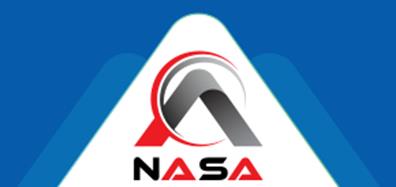



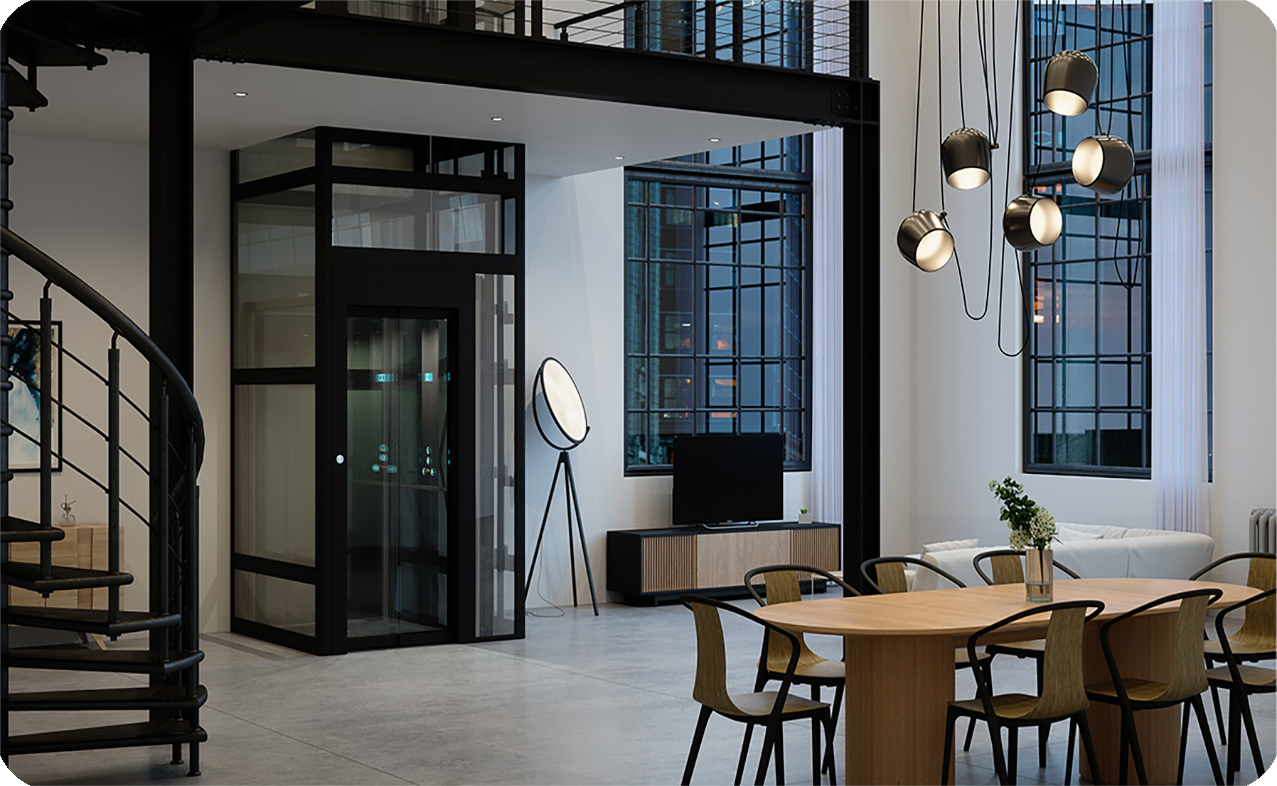
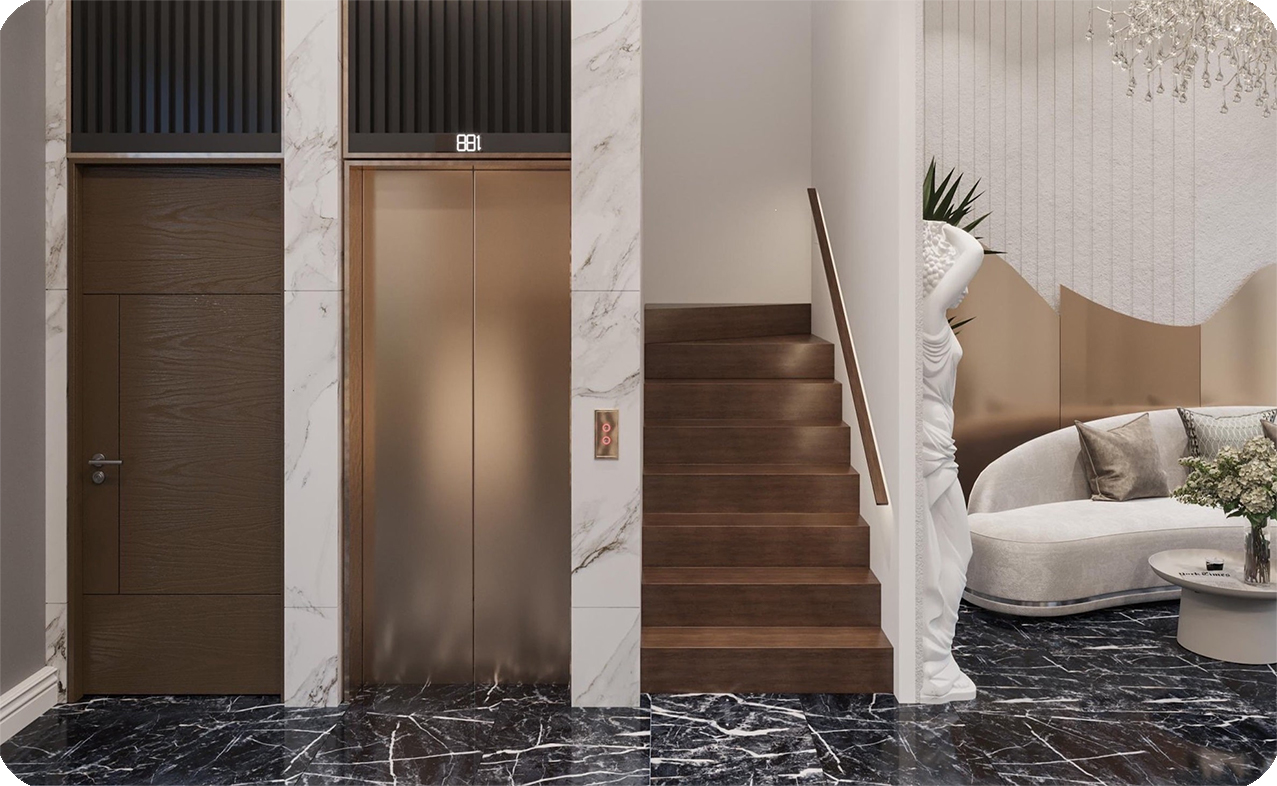
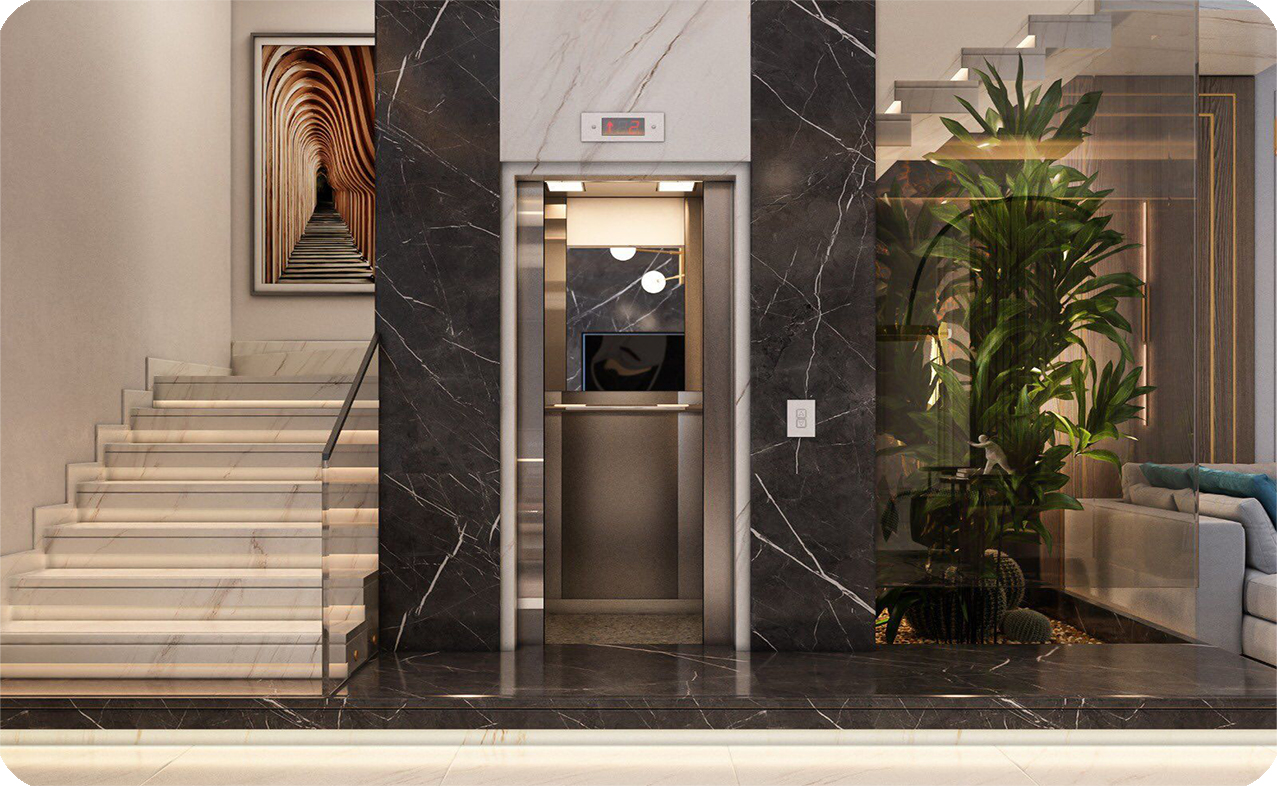


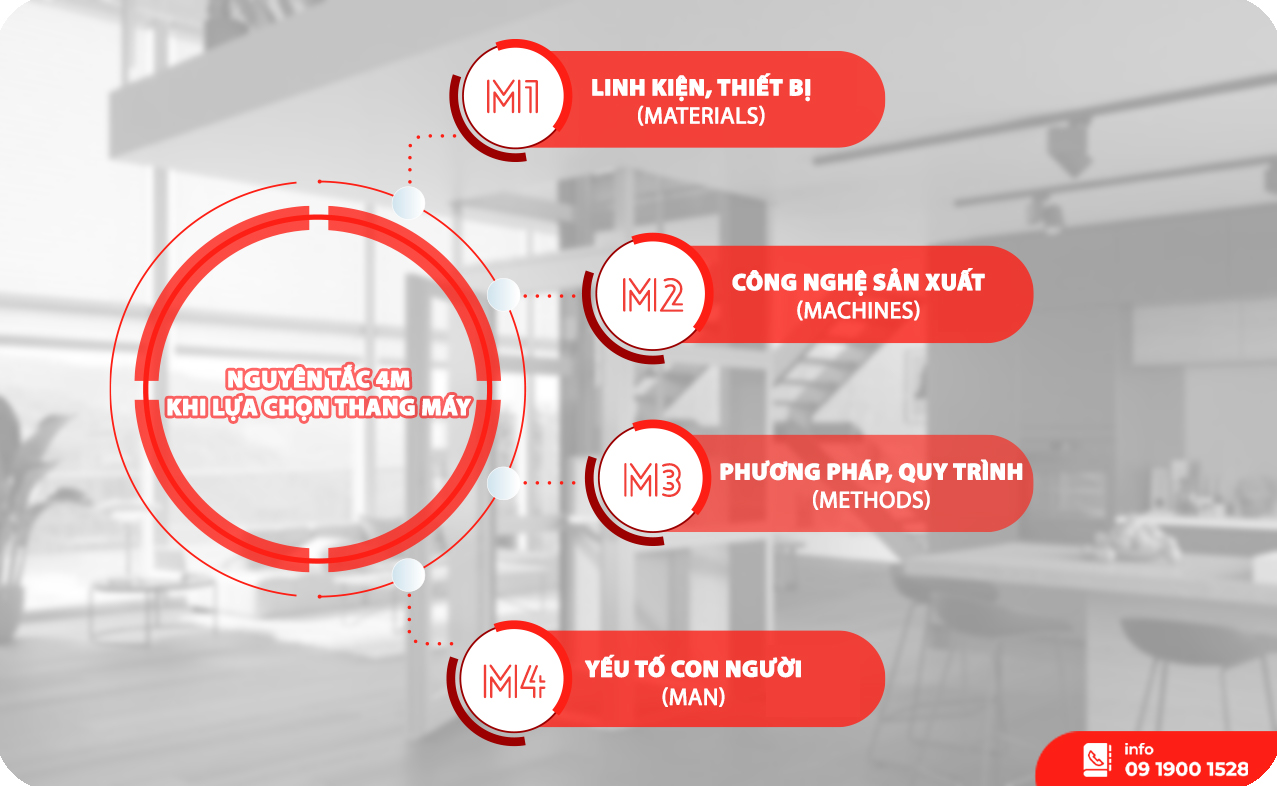

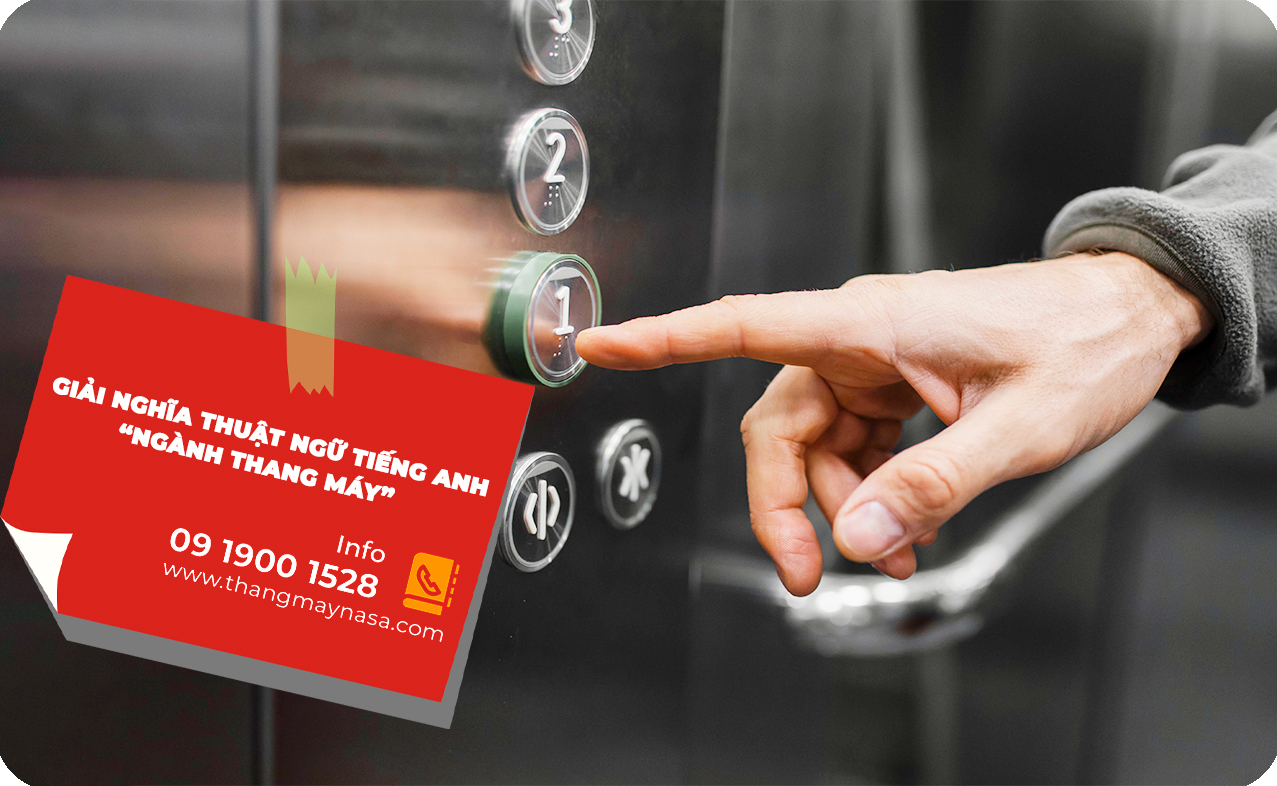
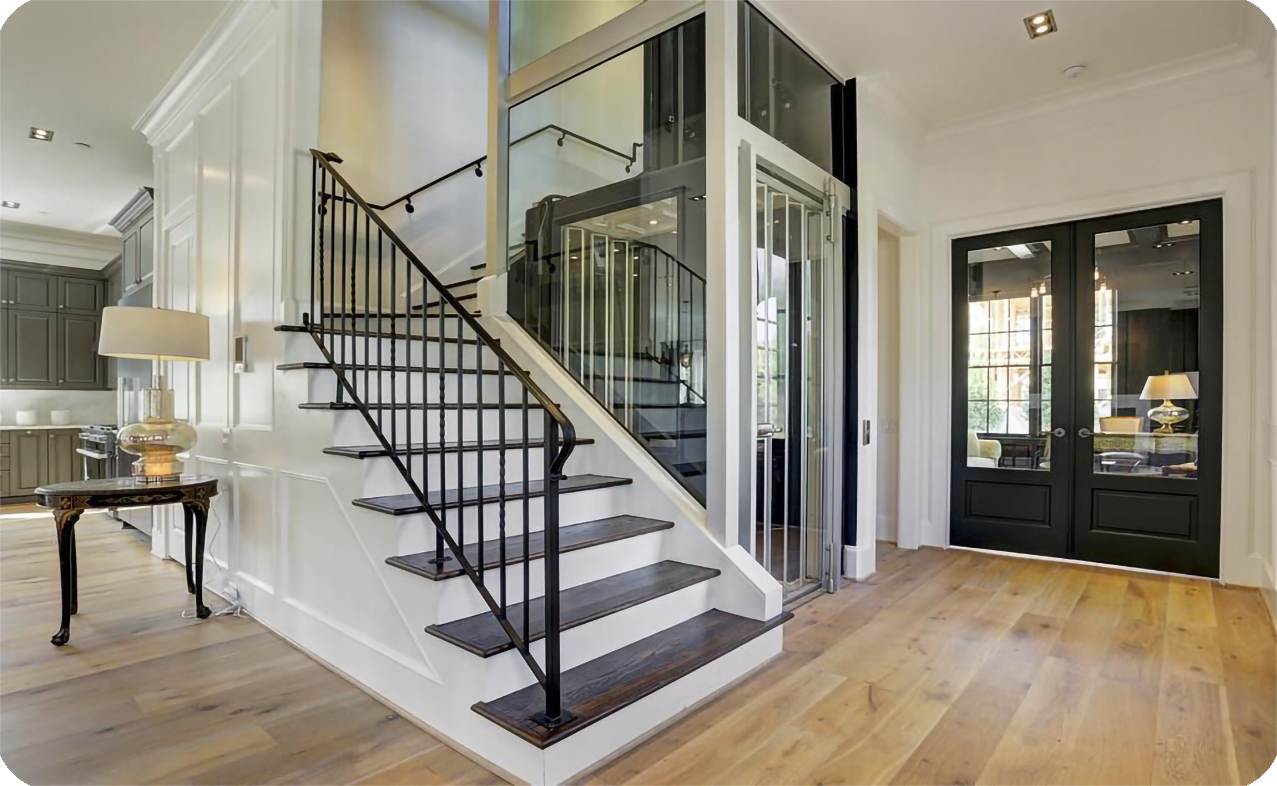
Bình luận